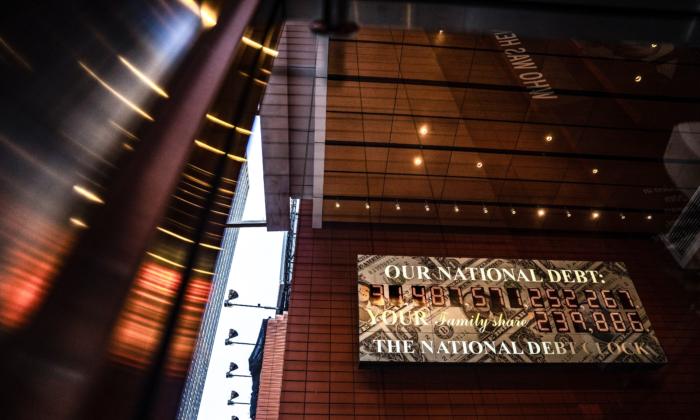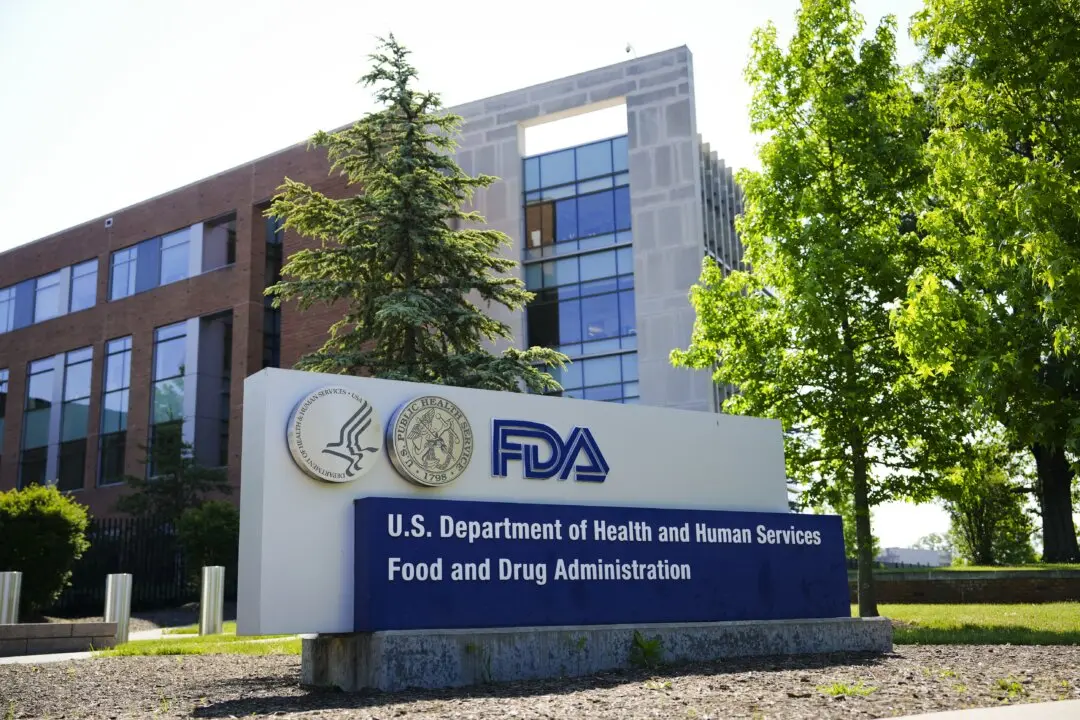A new projection shows that interest payments on U.S. public debt have climbed above $1 trillion per year, leading some economists to express concern.
A new analysis by Bloomberg Intelligence estimates that the annualized interest payments on America’s public debt have surpassed the $1 trillion mark, triggering concern about debt sustainability.
The
latest data from the Commerce Department’s Bureau of Economic Analysis show that the annualized interest payments as of the end the third quarter of the 2023 fiscal year (which ended on Sept. 30) stood at an annualized $981.3 billion.
But the Bloomberg Intelligence calculations, which are based on more current
October public debt data from the U.S. Treasury (which include the government’s debt balances and allow for a calculation of the average interest rate the government pays on that debt), estimate that interest payments have now rocketed above $1 trillion.
If accurate, the estimate means that the government’s interest payments have roughly doubled in the past 19 months, which is roughly the period during which the Federal Reserve hiked the benchmark interest rate from near zero to around 5 percent due to soaring inflation. But while inflation is still well above the Fed’s 2 percent target, the central bank’s interest rate hikes have caused borrowing costs to skyrocket, even as the government continues to borrow and borrow.
The Treasury data show that, as of Oct. 31, total public debt outstanding stood at $33.584 trillion. This includes $7.067 trillion in intragovernmental holdings and another $26.517 trillion in debt held by the public.
But in the first week of November, the federal government has continued to rack up debt. The latest daily Treasury data (as of Nov. 6)
show that the total public debt outstanding has now climbed to $33.686 trillion, including $26.631 trillion in debt held by the public. This suggests that the $1 trillion annualized interest payment, as projected by Bloomberg Intelligence, is already in the rear-view mirror and fresh debt burden records are poised to fall.
Confirming that trend is
latest long-term budget outlook from the Congressional Budget Office (CBO), which estimates that government outlays for interest will rise from roughly 2.5 percent of GDP in 2023 to 6.7 percent in 2053.
‘Crunch’ Coming?
Tony Seruga, managing director at Greenlaw Capital in California,
posted on X that, in his view, interest payments on America’s public debt could exceed $1.5 trillion by the end of this fiscal year.
Sung Won Sohn, a professor of economics at Loyola-Marymount University and a senior White House economic adviser under the Nixon administration, said in a
post on X that America’s surging national debt (now accruing at $1.5 trillion–2 trillion annually) is reshaping the U.S. economy.
“With interest expenses set to eclipse defense spending and major Treasury buyers stepping back, industries like real estate and tech face a crunch as higher rates reconfigure investment landscapes,” he wrote.
Mr. Sohn elaborated on this idea in a
Nov. 7 analysis on Substack, warning that the U.S. economy is at a critical juncture.“The American economy is at a crossroads, with its burgeoning debt and rising interest rates painting a gloomy fiscal picture,” he wrote. “As the country navigates this challenging terrain, industries including real estate, automotive, technology etc. must brace for the impact of an environment characterized by more expensive borrowing and a potential reconfiguration of investor priorities.“
Federal spending topped $6.1 trillion in the 2023 fiscal year, according to the
latest numbers from the CBO.
Public debt will continue to rise,
according to the CBO, reaching around 181 percent of GDP by 2053, up from the current 98 percent of GDP.
Interest Rate Chatter
Meanwhile, speculation is building that the Federal Reserve is nearing the end of its tightening cycle, although inflation (as measured by the
Fed’s preferred gauge) has been trending at around 3.4 percent, well above the 2 percent target.
Fresh from last week’s policy meeting at which they opted to hold rates steady within their current range of 5.25–5.5 percent, Federal Reserve policymakers have been weighing strong economic data, some signs of a slowdown, and the impact of higher long-term bond yields as they consider where to take rates from here in order to quash stubbornly high inflation.
Fed board member Christopher Waller said at a seminar at the St. Louis Fed on Tuesday that a “blowout” third-quarter U.S. economic growth at an annualized 4.9 percent pace warrants watching as the central bank considers its next moves.
Fed board member Michelle Bowman said she took the recent GDP number as evidence the U.S. economy not only “remained strong,” but may have gained speed and so may require a higher Fed policy rate.
“I continue to expect that we will need to increase the federal funds rate further,” Ms. Bowman said in remarks to the Ohio Bankers League.
Dallas Fed President Lorie Logan said that, despite some cooling, the labor market remains “very tight” while inflation is trending at around 3 percent—too high for comfort.
“We’re going to continue to need to see tight financial conditions in order to bring inflation to 2 percent in a timely and sustainable way,” Ms. Logan said, speaking at another event.
Markets currently put the odds of a 25-basis point rate hike when Fed policymakers meet in December at roughly 10 percent, while the remaining 90 percent think the central bank will continue to hold rates at their current level.
Reuters contributed to this report.






